Exploring the intricacies of Keltner Channels can unveil a realm of possibilities for traders seeking to enhance their predictive abilities in the dynamic world of price movements.
By uncovering the nuanced interplay between volatility, trend direction, and support/resistance levels, Keltner Channels present a multifaceted approach to price prediction that goes beyond traditional indicators.
As we delve into the 7 best methods for leveraging Keltner Channels to anticipate price fluctuations, a deeper understanding of their potential for informing strategic trading decisions emerges, promising a wealth of insights that could redefine your trading approach.
Key Takeaways on Keltner Channels
Amid the vast array of technical analysis tools available to traders, understanding the key takeaways on Keltner Channels can provide valuable insights into predicting price movements with enhanced precision.
Keltner Channels consist of three lines: the middle line, which is an Exponential Moving Average (EMA), and the upper and lower bands, which are calculated based on the Average True Range (ATR). The upper band is typically set at EMA + 2 * ATR, while the lower band is at EMA – 2 * ATR. These bands dynamically adjust to current market volatility, offering traders dynamic support and resistance levels.
Keltner Channels are particularly useful for identifying breakout points and determining the trend direction in various market conditions. When prices break above the upper band, it can signal a potential uptrend, while a break below the lower band may indicate a possible downtrend. By combining Keltner Channels with other technical indicators, traders can further enhance their ability to predict price movements accurately, making informed trading decisions based on the channel's signals.
Understanding Keltner Channel Calculation
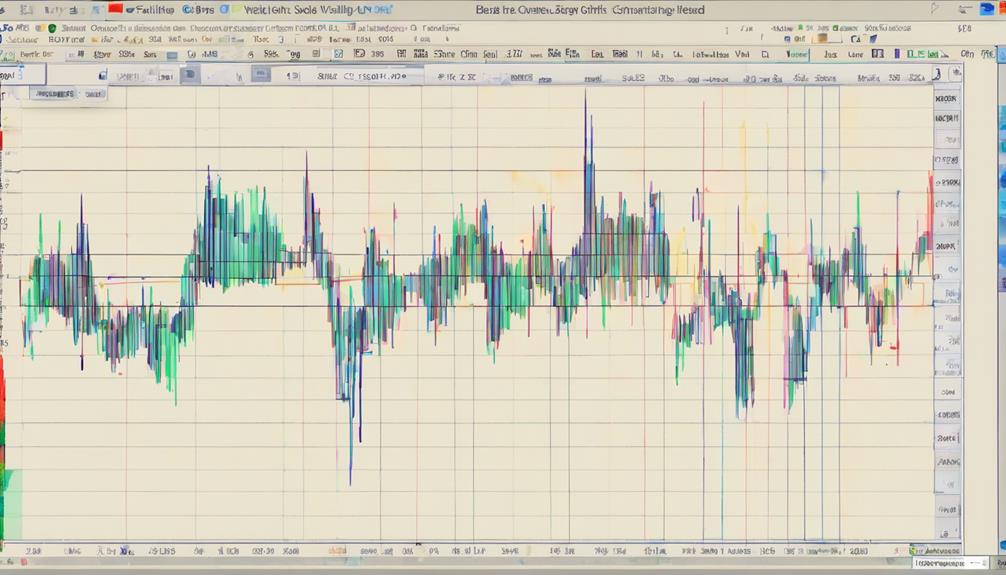
In the realm of technical analysis, a fundamental aspect lies in comprehending the calculation process behind Keltner Channels, a tool that integrates Exponential Moving Averages (EMA) and Average True Range (ATR) to offer traders dynamic support and resistance levels based on current market volatility.
The middle line of the Keltner Channel is typically calculated using a 20-day EMA. The upper band of the Keltner Channel is determined by adding 2 times the ATR to the middle line, while the lower band is calculated by subtracting 2 times the ATR from the middle line. These bands adjust dynamically based on the asset's volatility, providing traders with a visual representation of price movement that aids in price action analysis.
Understanding the upper and lower Keltner Channels is crucial for traders as they form the basis for identifying potential breakouts using Keltner Channels in trading strategies.
Using Keltner Channels for Price Prediction
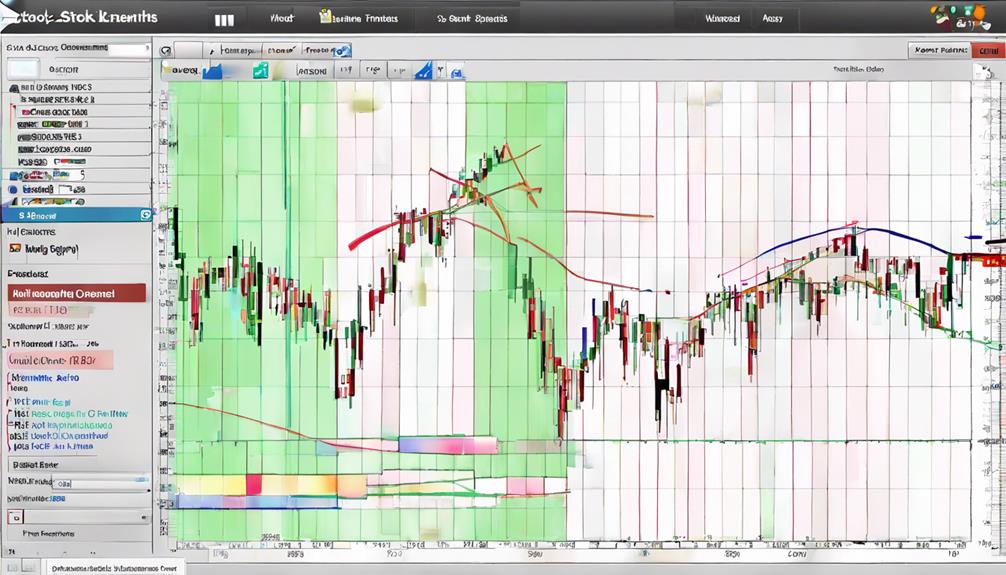
Utilizing Keltner Channels in technical analysis enables traders to make informed price predictions based on the interaction between Exponential Moving Averages (EMA) and Average True Range (ATR) bands. When using Keltner Channels for price prediction, traders focus on the following key aspects:
- Volatility-Based Forecasting: The upper and lower bands of Keltner Channels aid in forecasting potential price direction by incorporating volatility measures through ATR bands.
- Channel Characteristics Analysis: Monitoring the angle and width of the Keltner Channel helps enhance price movement predictions, providing insights into potential trend strength and momentum.
- Price Interaction Analysis: Traders can anticipate price reversals or continuations by analyzing how the price interacts with the upper and lower bands of the Keltner Channels.
- Support and Resistance Identification: Keltner Channels offer valuable support and resistance levels dynamically, assisting traders in predicting price movements and making informed trading decisions.
Keltner Channels Vs. Other Indicators
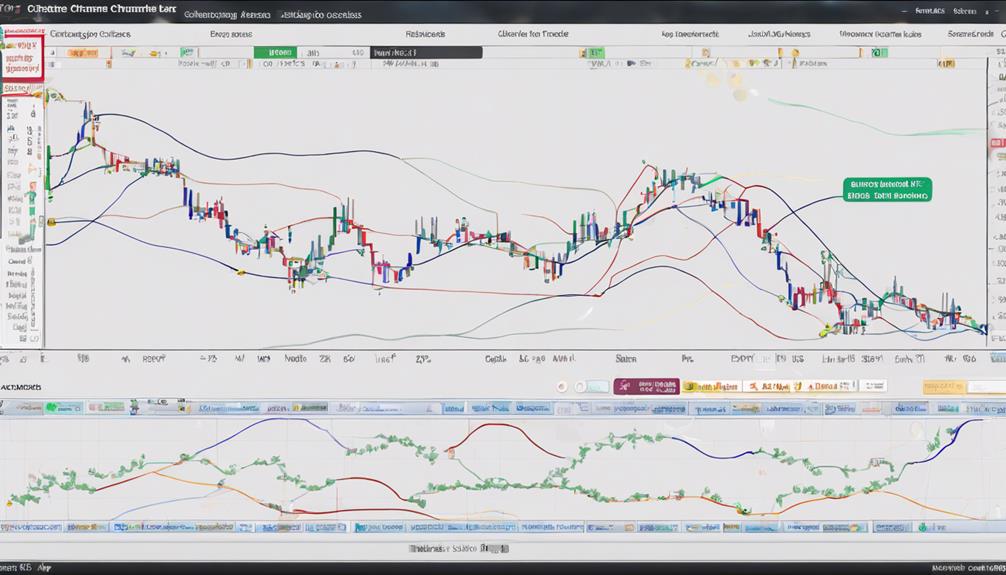
Drawing a distinction between Keltner Channels and other technical indicators illuminates the unique characteristics that set them apart in analyzing price movements and market trends.
Keltner Channels utilize Average True Range (ATR) to gauge volatility, emphasizing trend direction. In contrast, Bollinger Bands rely on standard deviation to measure price volatility and focus on volatility and price levels.
Keltner Channels adjust more responsively to recent volatility changes, offering smoother signals compared to Bollinger Bands. Both indicators assist in identifying overbought and oversold levels, but Keltner Channels provide a different perspective on price movement than Bollinger Bands.
Traders often combine Keltner Channels and Bollinger Bands to enhance their analysis of market conditions and potential trade opportunities. By incorporating these indicators together, traders can better understand the signals generated, adapt to varying market conditions, and capitalize on favorable trade opportunities.
Limitations of Keltner Channels in Analysis
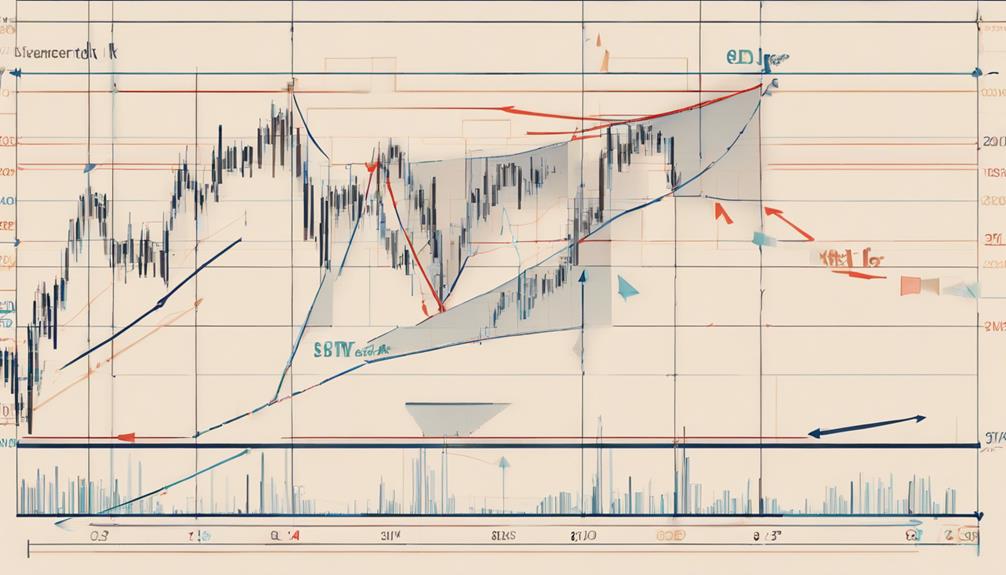
Keltner Channels, while useful, come with inherent limitations that traders must consider.
The smoothing effect of these channels can lead to lagging responses during fast price movements, potentially missing crucial entry or exit points.
Additionally, sudden price spikes may trigger false signals within the Keltner Channel, necessitating the use of supplementary tools for validation in trading decisions.
Keltner Channels Drawbacks
When analyzing market trends, it is crucial to recognize the limitations inherent in utilizing Keltner Channels as a primary tool for price movement prediction.
- Keltner Channels may generate false signals in choppy markets, as they are more effective in trending markets.
- These channels can be lagging indicators, causing delayed entry or exit points in fast-paced markets.
- They do not assess trend strength, necessitating the use of additional tools for confirmation.
- Traders may encounter whipsaws when prices briefly breach the bands without a significant trend change.
Understanding these drawbacks is essential for traders to effectively navigate various market conditions and employ Keltner Channels judiciously in their analysis.
Analytical Challenges Posed
Analyzing market trends using Keltner Channels presents significant challenges due to their susceptibility to false signals and limited effectiveness in certain market conditions.
Keltner Channels may generate misleading signals during periods of low volatility, potentially leading to misinterpretation of price movements. Additionally, sudden price spikes or gaps can distort Keltner Channel readings, affecting the accuracy of predicting price direction.
Whipsaw movements in the market can further exacerbate these challenges by triggering frequent false signals, making it difficult for traders to rely on Keltner Channels for precise analysis.
Furthermore, the effectiveness of Keltner Channels is more pronounced in trending markets, while their predictive capabilities are constrained in ranging or choppy conditions. To enhance analysis, considering other technical indicators or fundamental analysis alongside Keltner Channels is advisable to mitigate inaccuracies in price movement predictions.
Strategies for Predicting Price With Keltner Channels
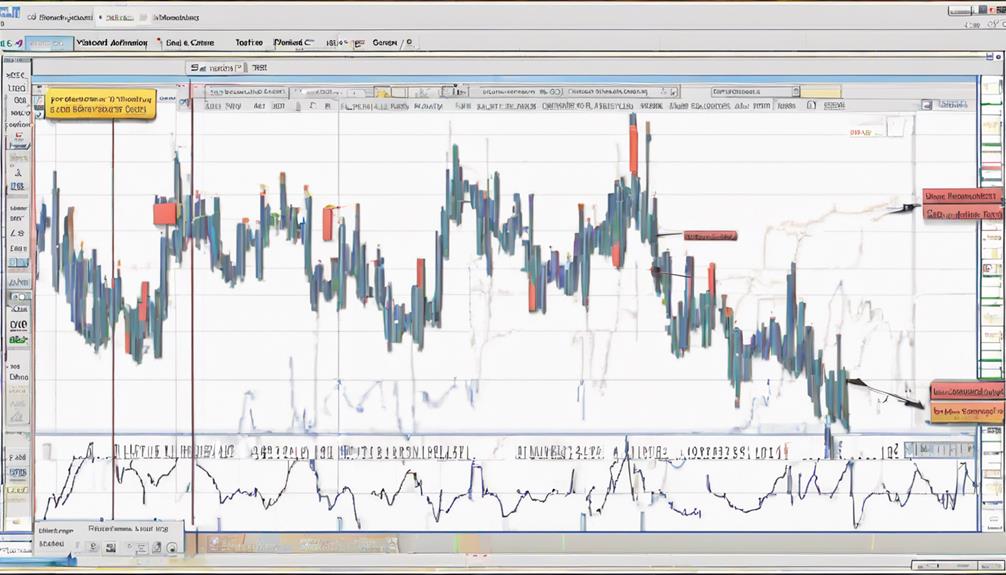
How can traders effectively leverage the predictive capabilities of Keltner Channels to develop robust strategies for forecasting price movements?
- Utilize the Angle of the Channel: Monitoring the slope of the Keltner Channel can offer insights into the direction of the trend, aiding in predicting future price movements.
- Identify Breakouts: Breakouts above the upper band of the Keltner Channel may signal potential upward price movements, while breaks below the lower band could indicate a downward trend.
- Seek Confirmation: Combining Keltner Channels with other technical indicators can help confirm potential price movements, enhancing the reliability of predictions.
- Consider Support and Resistance: Price breakouts near support or resistance levels within the Keltner Channel can serve as key indicators of significant price shifts, providing valuable entry and exit points for traders.
Maximizing Profit Potential With Keltner Channels
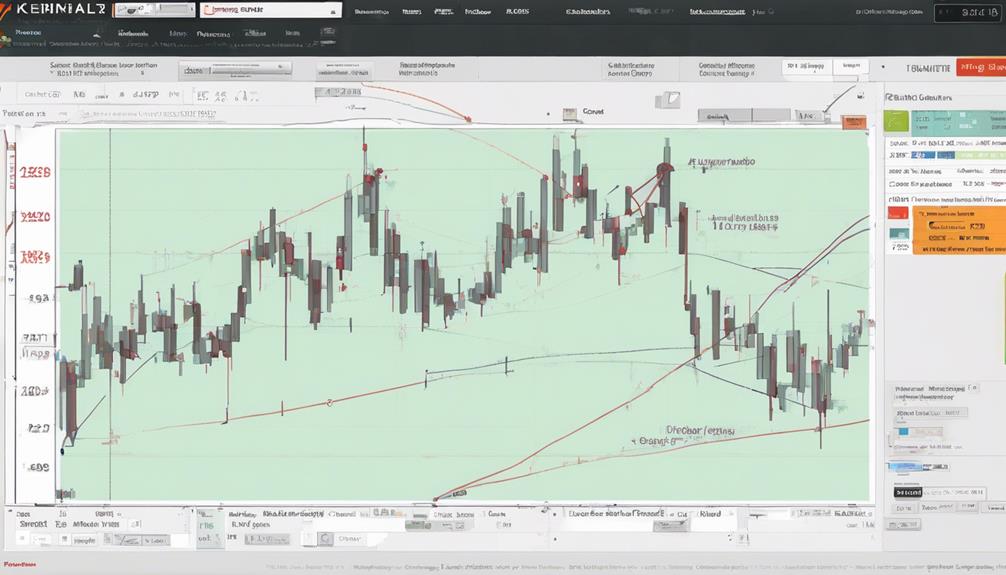
Maximizing profit potential with Keltner Channels involves establishing clear profit targets.
Defining precise entry and exit points based on channel breakouts is crucial.
Implementing effective risk management techniques to protect gains is essential.
By strategically aligning profit targets with Keltner Channel signals, traders can optimize their returns while minimizing potential losses.
Utilizing Keltner Channels in conjunction with risk management practices can enhance overall profitability.
This approach provides a structured way to make trading decisions.
Profit Targets Strategy
Utilizing Keltner Channels to set profit targets involves strategically identifying key resistance levels derived from the upper band for maximizing trading gains. When aiming for optimal profit targets using this strategy, traders should consider the following:
- Identification of Key Resistance Levels: Utilize the upper band of the Keltner Channels to pinpoint significant resistance levels where profit-taking can be executed.
- Maintaining a Favorable Risk-Reward Ratio: Ensure that the risk-reward ratio is at least 1:2 to balance potential gains against potential losses effectively.
- Monitoring Price Action: Track the price movement as it approaches the upper band to determine the most suitable profit target.
- Enhancing Success Through Risk Management: Combine the profit target strategy with robust risk management practices to optimize trading outcomes when employing Keltner Channels.
Entry and Exit
To optimize trading outcomes with Keltner Channels, strategic entry and exit points play a crucial role in maximizing profit potential. Identify entry points by observing price breaking above the upper Keltner Channel band, indicating potential buy opportunities.
When price touches or surpasses the opposite Keltner Channel band, consider exiting trades to secure profits. Utilize Keltner Channels to trail stop losses, safeguarding gains as price moves favorably. Combining Keltner Channels with other technical indicators can validate entry and exit signals.
The width of the Keltner Channel bands offers insights into potential price movements, allowing traders to adjust their strategies accordingly for better outcomes. By mastering entry and exit techniques with Keltner Channels, traders can enhance their profitability in the market.
Risk Management Techniques
Effective risk management techniques are essential for maximizing profit potential when utilizing Keltner Channels in trading strategies. To achieve this, traders should:
- Utilize trailing stop-loss orders to lock in profits and protect against sudden reversals.
- Implement position sizing based on risk tolerance to manage potential losses effectively.
- Use profit targets to secure gains and avoid getting greedy during profitable trades.
- Diversify trading portfolios to spread risk and reduce exposure to individual asset volatility.
What are the best strategies for using Keltner Channels to predict price movement in Forex trading?
When it comes to forex trading tips with Keltner Channels, one of the best strategies is to use the channel’s outer bands as support and resistance levels. These bands can help traders predict potential price movements and identify entry and exit points for their trades. By paying close attention to how price interacts with these bands, traders can make more informed decisions.
Frequently Asked Questions
What Is the Best Indicator to Use With the Keltner Channel?
The best indicator to use with the Keltner Channel is the Relative Strength Index (RSI). Its ability to confirm overbought or oversold conditions complements the Keltner Channel's volatility-based bands, providing traders with valuable insights for decision-making.
What Is the Keltner Channel for Price Action?
The Keltner Channel is a volatility-based indicator that consists of an EMA middle line flanked by upper and lower bands derived from ATR. It aids in identifying potential price movements by offering dynamic support and resistance levels.
Is Keltner Channel Strategy Profitable?
The Keltner Channel strategy has shown profitability with a profit factor of 1.48, despite a 43.12% success rate in 109 trades. While a max drawdown of 13.17% exists, the strategy yielded a net profit of $4,882.20.
How to Day Trade With Keltner Channels?
Day trading with Keltner Channels involves utilizing short-term price movements to capture quick profits. Traders can leverage these channels for identifying entry and exit points, adapting to market volatility, and confirming trends through the interaction of bands with price action.
Conclusion
In conclusion, utilizing Keltner Channels for predicting price movements can be a valuable tool for traders seeking to analyze volatility and trend direction.
By understanding the calculation of the channels, comparing them to other indicators, and developing strategies based on their signals, traders can make informed decisions to maximize profit potential.
As the saying goes, 'A rising tide lifts all boats,' and Keltner Channels can help navigate the waters of the market with precision and insight.


